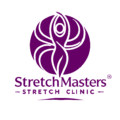The human body is an intricate marvel of biomechanics and neurophysiology, constantly adapting to the stresses and demands placed upon it. When this delicate balance is disrupted by chronic pain, the consequences reverberate throughout the system, affecting not just physical function but also mental and emotional well-being. The persistent ache, the restricted movement, and the fear of exacerbating pain often lead to a vicious cycle of decreased activity, increased stiffness, and heightened pain perception. In this context, assisted stretching for chronic pain emerges not as a mere symptomatic fix, but as a sophisticated, evidence-based intervention designed to re-establish physiological harmony and empower individuals to reclaim their lives.
This article delves deeper into the scientific underpinnings of why professional assisted stretching is a profoundly effective tool for managing and alleviating chronic pain, extending beyond simple flexibility gains to address complex neurological and tissue adaptations.
Table of Contents
ToggleThe Nuances of Assisted Stretching: Beyond Self-Directed Flexibility
While individual stretching offers basic benefits, assisted stretching elevates this practice to a therapeutic art, leveraging the expertise of a stretch therapist trained in advanced techniques. This professional guidance is crucial because, left to our own devices, our bodies often employ protective mechanisms – notably the stretch reflex – that limit the true potential for muscle elongation. This reflex, a primal safety mechanism mediated by muscle spindles, causes a muscle to contract when stretched too rapidly or too far, preventing perceived injury.
A skilled stretch therapist understands how to effectively navigate and even modulate this reflex through techniques like Proprioceptive Neuromuscular Facilitation (PNF), allowing for deeper, safer, and more effective tissue lengthening. The application of precise, controlled external force, combined with specific client instructions, enables the therapist to guide the body into ranges of motion unachievable independently, thereby promoting significant and sustainable physiological changes.
The Evidence Unpacked: How Assisted Stretching Tackles Chronic Pain
The efficacy of assisted stretching for chronic pain is not anecdotal; it is increasingly supported by a growing body of scientific literature exploring its impact on musculoskeletal, neurological, and even psychosocial aspects of pain.
- Neuromuscular Modulation and Pain Sensitivity (Stretch-Induced Hypoalgesia – SIH): Recent research highlights the profound analgesic effect of stretching. Studies, such as those by Støve et al. (2024) and Støve et al. (2025), demonstrate that stretching can significantly increase pressure pain thresholds both locally and at distant sites, a phenomenon termed stretch-induced hypoalgesia (SIH). This suggests that stretching influences the central nervous system’s processing of pain signals. The proposed mechanism involves the endogenous modulation of somatosensory input, implying that stretching can alter how the brain perceives incoming sensory information, thereby reducing the perceived intensity of pain. This is akin to the well-known exercise-induced hypoalgesia (EIH), where physical activity itself can reduce pain sensitivity (Behm et al., 2021). The authors articles and studies also corroborates this, stating that “There is scientific evidence that stretching can have positive acute and long-term effects on regional and widespread pain sensitivity, leading to reduced pain sensitivity.”
- Influencing Muscle Viscoelasticity and Tissue Remodelling: Muscles and their surrounding connective tissues (fascia, tendons) are viscoelastic, meaning they exhibit both viscous (fluid-like) and elastic (spring-like) properties. In chronic pain states, these tissues can become stiffened and less compliant. Regular, controlled stretching, particularly through sustained holds and repeated cycles, can induce changes in the viscoelastic properties of the musculotendinous unit. Research indicates that stretching can decrease the stiffness and hysteresis (energy loss during cyclic loading) of tendon structures, essentially making them more compliant and elastic (Kubo et al., 2001). This enhanced compliance allows muscles to lengthen more effectively, reducing passive tension and improving the ease of movement.
Furthermore, long-term mechanical stress, such as that applied during assisted stretching, can stimulate cellular adaptations. While the exact mechanisms are complex, studies suggest that sustained mechanical loading can influence the synthesis and organization of extracellular matrix components like collagen and elastin within connective tissues (Kubo et al., 2001). While overstretching can be detrimental, safe and progressive stretching encourages the remodelling of collagen fibres, leading to a more extensible and resilient tissue matrix. This means the tissues become structurally more adaptable to movement, reducing the likelihood of pain associated with stiffness.
- The Proprioceptive Re-education in Chronic Pain: As previously discussed, proprioception – your body’s intricate sense of position and movement – is crucial for motor control and postural stability. In the context of chronic pain, particularly in conditions like low back pain, proprioceptive function can be impaired (IASP, 2023). This impairment can lead to compensatory movement patterns, increased muscle guarding, and a perpetuation of pain signals due to incongruence between motor intention and sensory feedback.
PNF stretching is particularly adept at proprioceptive re-education. By actively engaging muscles through controlled contraction and then guiding them into a deeper stretch, PNF effectively “resets” the proprioceptors. The intense activation of muscle spindles and Golgi tendon organs during the contract phase, followed by their inhibition during relaxation, helps to re-calibrate the neuromuscular system. This process helps the nervous system to perceive and accept a new, increased range of motion as safe, thereby reducing the protective muscle guarding that often accompanies chronic pain. This re-education is critical for restoring functional movement patterns and long-term pain relief. There is some evidence that suggests stretching can change how the brain perceives discomfort, increasing range of motion.
- Myofascial Release and the Fascial System: Beyond individual muscles, assisted stretching often incorporates elements of myofascial release. The fascial system is a continuous web of connective tissue that envelops muscles, organs, and bones, providing structural support and facilitating movement. In chronic pain, this fascial network can become rigid, restricted, and adhered, leading to localized “trigger points” and widespread pain referral.
Myofascial release techniques, whether manual or assisted, aim to apply sustained pressure to these fascial restrictions, encouraging their release and elongation. A systematic review and meta-analysis by Ajimsha et al. (2021) indicated that myofascial release significantly improved pain and physical function in patients with chronic low back pain. By restoring the fluidity and extensibility of the fascial system, assisted stretching indirectly reduces mechanical tension on pain-sensitive structures and improves overall tissue glide, leading to decreased pain and enhanced mobility.
The Physiological Mechanisms of Pain Reduction: A Deeper Look
The multi-faceted mechanisms through which assisted stretching mitigates chronic pain include:
- Autogenic Inhibition: As described with PNF, the contraction of a muscle prior to stretching activates the Golgi Tendon Organs (GTOs). When activated, GTOs send inhibitory signals to the spinal cord, leading to a reflexive relaxation of the same muscle. This “self-inhibition” allows for a greater subsequent stretch, bypassing the natural protective mechanisms that limit flexibility (Sharman et al., 2006).
- Reciprocal Inhibition: In some PNF variations, contracting the antagonist muscle (the muscle on the opposite side of the joint being stretched) causes a reflexive relaxation of the target muscle. This neurophysiological principle is also leveraged to achieve deeper stretches and reduce muscle guarding (Sharman et al., 2006).
- Stress Relaxation: When a musculotendinous unit is held under constant tension (as in a sustained stretch), the force required to maintain that length gradually decreases. This phenomenon, known as stress relaxation, reflects changes in the viscous components of the tissue, allowing for progressive lengthening over time (Kubo et al., 2001).
- Gate Control Theory of Pain: While more complex, stretching can also influence pain perception through the gate control theory. Non-noxious sensory input (like the sensation of stretch) can activate large-diameter nerve fibres, which effectively “close the gate” in the spinal cord, preventing smaller, pain-transmitting fibres from sending their signals to the brain (Sharman et al., 2006).
- Improved Local Circulation: Reduced muscle tension and improved tissue compliance enhance blood flow to the affected areas. This delivers essential oxygen and nutrients, facilitating cellular repair and flushing out inflammatory by-products that contribute to pain and stiffness.
- Reduction of Nerve Entrapment: By lengthening tight muscles and releasing fascial restrictions, assisted stretching directly reduces mechanical compression on peripheral nerves. This is particularly relevant for conditions like sciatica, where the sciatic nerve can be entrapped by tight piriformis or hamstring muscles. Reducing this compression alleviates nerve irritation and associated pain, numbness, or tingling.

Who Can Truly Benefit from This Advanced Approach to Stretching?
The versatility of stretch therapy extends far beyond injury recovery, making it a powerful adjunctive therapy for a broad spectrum of individuals:
- Individuals with Chronic Musculoskeletal Pain: This is the primary demographic. From persistent lower back pain stemming from postural imbalances or disc issues, to chronic neck and shoulder pain often linked to desk work and stress, and conditions like sciatica relief, osteoarthritis (improving joint mobility and reducing load on affected joints), and even the widespread myofascial pain of fibromyalgia, assisted stretching can provide significant relief and functional improvement. Systematic reviews and trials suggest that stretching can improve pain, health-related quality of life, and physical functioning in individuals with fibromyalgia (Sosa-Reina et al., 2017; Valim et al., 2017). A systematic review (Eur J Appl Physiol, 2025) concluded that chronic stretch training can decrease pain in patients suffering from musculoskeletal pain, noting improvements in range of motion and reduced muscle stiffness alleviating nerve pressure. Behm et al. (2021) also highlight that chronic stretching programs consistently report alleviation or reduction of pain. Studies have found that PNF (Proprioceptive Neuromuscular Facilitation) assisted stretching can significantly reduce pain and improve mobility in patients with chronic lower back pain and that stretching exercises can be useful in managing pain for knee osteoarthritis (KOA), especially when used alone, improving pain, range of motion, and function.
- Sedentary Professionals (Desk Workers): Prolonged sitting leads to adaptive shortening of key muscles (e.g., hip flexors, pectorals) and weakening of others (e.g., glutes, upper back extensors), contributing to muscle stiffness, joint stiffness, and detrimental postural imbalances like “forward head posture” and “rounded shoulders.” Assisted stretching directly addresses these adaptations, promoting spinal alignment and reducing compensatory strain.
- Athletes and Active Individuals: For those pushing their physical limits, stretching for athletes is paramount for injury prevention, optimizing performance, and accelerating recovery. Enhanced range of motion translates to more powerful and efficient movements, while reduced muscle tension minimizes the risk of strains and tears. It aids in quicker recovery from intense training by improving blood flow and reducing post-exercise muscle soreness (DOMS), though the effect on DOMS can be conflicting, chronic stretching prior to exercise may help (Behm et al., 2021).
- Seniors and Individuals with Mobility Issues: As a natural consequence of aging, collagen fibres stiffen, and elastin content decreases, leading to reduced flexibility and mobility issues. Stretching for seniors can dramatically counteract these age-related changes, improving joint range, reducing stiffness, and maintaining functional independence, directly impacting their quality of life.
- Post-Rehabilitation Clients: Following injury or surgery, assisted stretching (often as part of a comprehensive physiotherapy program) is invaluable for restoring lost range of motion, preventing adhesions, and facilitating the return to optimal function (stretching for rehabilitation).
Safety and Professional Guidance: A Cornerstone of Effective Stretch Therapy
While broadly safe, the nuanced application of assisted stretching necessitates a qualified stretch therapist. They possess the anatomical knowledge and clinical judgment to:
- Assess Individual Needs: Conduct a thorough evaluation, considering medical history, current pain levels, existing conditions (e.g., severe osteoporosis, unmanaged blood clots, recent joint replacements), and specific functional limitations.
- Tailor the Session: Adapt techniques and intensity to the client’s unique presentation, ensuring safety and maximizing therapeutic benefit. This prevents exacerbation of acute injuries or overstretching compromised tissues.
- Monitor and Adjust: Continuously communicate with the client to gauge comfort levels, adjusting stretches to remain within a therapeutic window – challenging but never acutely painful. The goal is a sensation of deep stretch, not sharp discomfort. Research suggests that stretching to the point of pain does not offer additional benefits over stretching to the point of discomfort (Muanjai et al., 2017).
- Ensure Proper Biomechanics: Guarantee that stretches are performed with correct body alignment, protecting joints and preventing compensatory movements that could lead to new issues.
For individuals with specific health concerns, a preliminary consultation with a GP is always recommended to ensure that assisted stretching is an appropriate and safe addition to their overall wellness plan.
Frequency and Consistency: The Path to Lasting Transformation
The duration of benefits from an assisted stretching session is cumulative and highly individual. While immediate relief in tension and increased flexibility are often felt post-session, lasting changes are predicated on consistency. Just as a plant needs regular watering to thrive, your body requires consistent attention to maintain its newfound flexibility and freedom from pain. Regular stretch routines and sessions foster a progressive “re-education” of your neuromuscular system, encouraging muscles and connective tissues to sustain their lengthened state and maintain optimal function. This creates a positive feedback loop, where increased mobility leads to less pain, which in turn encourages more movement, further reinforcing the benefits.
Practical Considerations: What to Expect
- Attire: Opt for loose-fitting, comfortable athletic wear that allows for unrestricted movement. The aim is to facilitate full range of motion without any fabric resistance.
- Sensation: Expect a deep stretching sensation, possibly with mild discomfort as muscles lengthen. Sharp or excruciating pain is a clear indication to communicate with your therapist, who will immediately adjust the stretch. It’s about working with your body’s natural limits, not against them. As noted, stretching to the point of pain has not shown additional benefits over stretching to discomfort (Muanjai et al., 2017).
Assisted Stretching vs. Self-Stretching: The Professional Advantage
The distinctions between self-directed stretching and professional assisted stretching are profound:
- Overcoming the Stretch Reflex: A therapist can safely guide a limb beyond the point where the stretch reflex typically engages, enabling deeper tissue lengthening through neurophysiological inhibition.
- Targeted Intervention: Therapists possess the anatomical knowledge to precisely identify and target specific muscles and fascial lines contributing to pain and dysfunction. This includes intricate stretches for deep hip rotators (e.g., piriformis stretch for sciatica) or intricate shoulder musculature that are nearly impossible to isolate effectively on one’s own.
- Correct Form and Safety: Critical for injury prevention, a therapist ensures proper biomechanics, preventing strain on joints or surrounding tissues that can occur with incorrect self-stretching.
- Multi-Modal Techniques: Professionals utilize a repertoire of techniques beyond static stretching, including PNF stretching, myofascial release, dynamic stretching, and even elements of resistance stretching (where a muscle is actively engaged while being lengthened). This multi-modal approach addresses various aspects of tissue stiffness and neurological inhibition. For maximizing long-term ROM, PNF or static stretching are often preferred over ballistic/dynamic stretching (Konrad et al., 2024). The therapists at StretchMasters® employ their unique Flex-Release™ System which is a multimodal approach to stretching for lasting results.
- Progressive Overload and Customization: A therapist systematically progresses the intensity and depth of stretches, ensuring continuous adaptation and avoiding plateaus. The session is meticulously customized to your body’s daily presentation, adapting to fluctuations in pain or stiffness.
This professional expertise transforms stretching from a general exercise into a targeted therapeutic intervention, yielding superior, more sustainable results.
What Are the Main Benefits of Assisted Stretching for Chronic Pain?
The benefits are truly extensive, transforming daily life for many:
- Chronic Pain Relief: This is the big one! By addressing muscle tightness and improving joint mobility, assisted stretching can significantly reduce pain levels in areas like the lower back, neck, and shoulders, with chronic programs consistently showing pain alleviation (Behm et al., 2021).
- Increased Flexibility: You’ll find it easier to move, bend, and reach. This directly translates to improved quality of life.
- Improved Range of Motion: Your joints will move more freely, making everyday activities less of a struggle.
- Reduced Muscle Tension: That constant knot in your shoulders? The tightness in your hamstrings? Assisted stretching helps melt it away.
- Improved Posture: By lengthening tight muscles that pull your body out of alignment, assisted stretching can help you stand taller and reduce strain (assisted stretching for posture correction).
- Enhanced Mobility: Whether it’s walking further, climbing stairs with ease, or simply getting out of a chair, your overall movement will improve.
- Injury Prevention: More flexible muscles are less prone to strains and tears, making it an excellent proactive measure for athletes and everyday individuals alike.
- Pain Management: For those with ongoing conditions, it provides a non-pharmacological tool to manage discomfort.
- Stress Reduction: The act of stretching, especially with a therapist guiding you, can be incredibly relaxing, leading to a reduction in overall stress levels (assisted stretching for stress relief).
- Improved Blood Circulation: Stretching can help improve blood flow to muscles, aiding in nutrient delivery and waste removal.
- Faster Recovery from Injury: As part of a broader physical therapy or rehabilitation plan, it can accelerate healing and restore function.
Think of it as an investment in your body’s long-term health and comfort.

Limitations in Research
While the evidence supporting assisted stretching for chronic pain is growing, it’s important to acknowledge some limitations in the current body of research. Many studies investigating the effects of stretching focus primarily on improving joint range of motion (ROM) in healthy individuals rather than directly measuring changes in pain sensitivity in people living with chronic pain. For example, systematic reviews like that of Konrad et al. (2024) show consistent ROM improvements from various stretching techniques, including static and proprioceptive neuromuscular facilitation (PNF) stretching. However, they do not assess pain outcomes directly, limiting their applicability to clinical pain management.
Furthermore, much of the existing research does not differentiate between self-stretching and therapist-assisted stretching, which may involve distinct neuromuscular and psychological mechanisms. Even in studies that do report pain relief, such as those using pressure pain threshold (PPT) testing, sample sizes are often small, and the duration of interventions may not be sufficient to assess long-term effects.
Another challenge is the heterogeneity of study designs—different stretching techniques, durations, and intensities are used, making it difficult to establish clear clinical guidelines. Moreover, individuals with chronic pain conditions often experience central sensitisation and altered pain processing, which may respond differently to stretching interventions compared to healthy populations. As such, more high-quality, large-scale trials are needed to assess the specific effects of assisted stretching on both local and widespread pain in people with chronic pain conditions. These studies should include validated pain measures, account for individual variability, and compare assisted stretching to other therapeutic approaches. In short, while assisted stretching shows promise as a tool in pain management, further research is essential to understand how, for whom, and under what conditions it is most effective.
Conclusion: Embracing a Life of Enhanced Movement and Comfort
The secret to pain-free living, while perhaps not a single, simple answer, is profoundly influenced by the principles and practice of assisted stretching for chronic pain. It’s a sophisticated, evidence-based intervention that moves beyond superficial symptom management to address the underlying neurological, muscular, and fascial restrictions that perpetuate discomfort. By leveraging advanced techniques like PNF, influencing muscle viscoelasticity, re-educating proprioception, and releasing fascial adhesions, professional stretch therapy offers a powerful pathway to:
- Significantly reduce and manage chronic pain in its various manifestations.
- Achieve remarkable increases in flexibility and range of motion, unlocking new functional capacities.
- Enhance overall mobility, making everyday activities enjoyable again.
- Correct postural imbalances, alleviating chronic strain and improving body mechanics.
- Foster profound stress reduction and contribute to overall mental and physical well-being.
If you are navigating the challenges of chronic pain, considering assisted stretch therapy is not just an option, but a compelling, scientifically supported avenue for profound relief and a renewed quality of life. Seek out a qualified and experienced stretch therapist – they are your partners in this journey towards a more comfortable, mobile, and ultimately, a much happier and healthier you. Imagine waking up feeling truly refreshed, ready to embrace the day without the constant burden of aches and stiffness. This isn’t just a hopeful thought; for many, it can become a tangible reality.
Ready to reclaim your freedom from pain and rediscover the joy of uninhibited movement? Why not explore how assisted stretching could transform your life? Visit a reputable stretch therapy provider in your area and book your first stretch session today. Your body, mind, and spirit will undoubtedly thank you for this transformative investment.
References
- Ajimsha, M. S., Al-Mughairi, A. N., & Al-Amri, M. N. (2021). Myofascial Release for Chronic Low Back Pain: A Systematic Review and Meta-Analysis. Pain Research and Management, 2021. Retrieved from https://www.ncbi.nlm.nih.gov/pmc/articles/PMC8355621/
- Behm, D. G., Kay, A. D., Trajano, G. S., Alizadeh, S., & Blazevich, A. J. (2021). Effects of acute and chronic stretching on pain control. Journal of Clinical Exercise Physiology, 10(1), 1-27. https://pure.northampton.ac.uk/en/publications/effects-of-acute-and-chronic-stretching-on-pain-control
- IASP (International Association for the Study of Pain). (2023). Proprioception and Geriatric Low Back Pain. Retrieved from https://www.iasp-pain.org/proprioception-and-geriatric-low-back-pain/
- Konrad, A., Alizadeh, S., Daneshjoo, A., Anvar, S. H., Graham, A., Zahiri, A., … & Behm, D. G. (2024). Chronic effects of stretching on range of motion with consideration of potential moderating variables: A systematic review with meta-analysis. Journal of Sport and Health Science, 13(2), 186-194. Retrieved from https://www.sciencedirect.com/science/article/pii/S2095254623000571
- Kubo, K., Kanehisa, H., & Fukunaga, T. (2001). Influence of static stretching on viscoelastic properties of human tendon structures in vivo. Journal of Applied Physiology, 90(2), 520-527. Retrieved from https://journals.physiology.org/doi/10.1152/jappl.2001.90.2.520
- Muanjai, P., Jones, D. A., Mickevicius, M., Satkunskiene, D., Snieckus, A., Skurvydas, A., & Kamandulis, S. (2017). The acute benefits and risks of passive stretching to the point of pain. European Journal of Applied Physiology, 117(6), 1217-1226. Retrieved from https://link.springer.com/article/10.1007/s00421-017-3608-y
- Sharman, M. J., Cresswell, A. G., & Riek, R. F. (2006). Proprioceptive neuromuscular facilitation stretching: mechanisms and clinical implications. Sports Medicine, 36(10), 919-929. Retrieved from https://pubmed.ncbi.nlm.nih.gov/17052131/
- Sosa-Reina, M. D., Nunez-Cortes, J. M., Medina-Gil, E., & Morales-Asencio, J. M. (2017). Effectiveness of Therapeutic Exercise in Fibromyalgia Syndrome: A Systematic Review and Meta-Analysis of Randomized Clinical Trials. Pain Research and Management, 2017. Retrieved from https://pmc.ncbi.nlm.nih.gov/articles/PMC5632473/
- Støve, M. P., Hirata, R. P., & Palsson, T. S. (2024). Regional and widespread pain sensitivity decreases following stretching in both men and women – Indications of stretch-induced hypoalgesia. Journal of Bodywork & Movement Therapies, 39, 32-37. Retrieved from https://pubmed.ncbi.nlm.nih.gov/38876646/
- Støve, M. P., Hansen, L. Ø., Elmbæk, K. K., Thomsen, J. L., Riis, A., & Magnusson, S. P. (2025). The effect of stretching intensity on pain sensitivity: A randomized crossover study on healthy adults. European Journal of Pain, 29(1), 1-13. Retrieved from https://pmc.ncbi.nlm.nih.gov/articles/PMC11755707/
- Valim, V., Valim, A. R., & Valim, L. B. (2017). Muscle stretching exercises and resistance training in fibromyalgia: which is better? A three-arm randomized controlled trial. Clinical and Experimental Rheumatology, 35(6 Suppl 108), 85-92. Retrieved from https://www.researchgate.net/publication/321428372_Muscle_stretching_exercises_and_resistance_training_in_fibromyalgia_which_is_better_A_three-arm_randomized_controlled_trial
- Weerapong, P., Hume, P. A., & Kolt, G. S. (2004). Stretching: Mechanisms and Benefits for Sport Performance and Injury Prevention. Physical Therapy Reviews 9(4):189-206. Retrieved from https://www.researchgate.net/publication/233686755_Stretching_Mechanisms_and_Benefits_for_Sport_Performance_and_Injury_Prevention
- The Fibroguy Blog: Fibromyalgia and Stretching. (n.d.). Retrieved from https://www.thefibroguy.com/blog/fibromyalgia-and-stretching/
- Assisted Stretching for Chronic Pain: A Proven Path to Long-Term Relief and Mobility. (n.d.) https://helpmestretch.co.uk/assistedstretching-for-chronic-pain-relief/
- Finding Relief: The Benefits of Assisted Stretching for Ongoing Pain. (n.d.). https://stretchmasters.co.uk/assisted-stretching-for-chronic-pain-relief/
Disclaimer:
The content on this blog is provided for general information and wellness purposes only. It should not be considered medical advice, diagnosis, or treatment. StretchMasters® services, including assisted stretching, are intended to support overall wellbeing and are not a substitute for professional healthcare guidance.
Always consult with a qualified medical professional before starting any new therapy, especially if you have existing health conditions. StretchMasters®, its parent company Skuil Ltd, and affiliated clinics accept no liability for decisions made based on this content.
We strive to ensure that all information is accurate and up to date; however, due to the evolving nature of health research, we cannot guarantee that all content reflects the latest evidence. Additionally, external links shared in blog posts may change, be updated, or become inactive over time without notice.
Opinions expressed in individual blog posts are those of the author and do not necessarily reflect the views or policies of StretchMasters® or its subsidiaries. Any reference to third-party organisations, websites, services, or products is not an endorsement.

